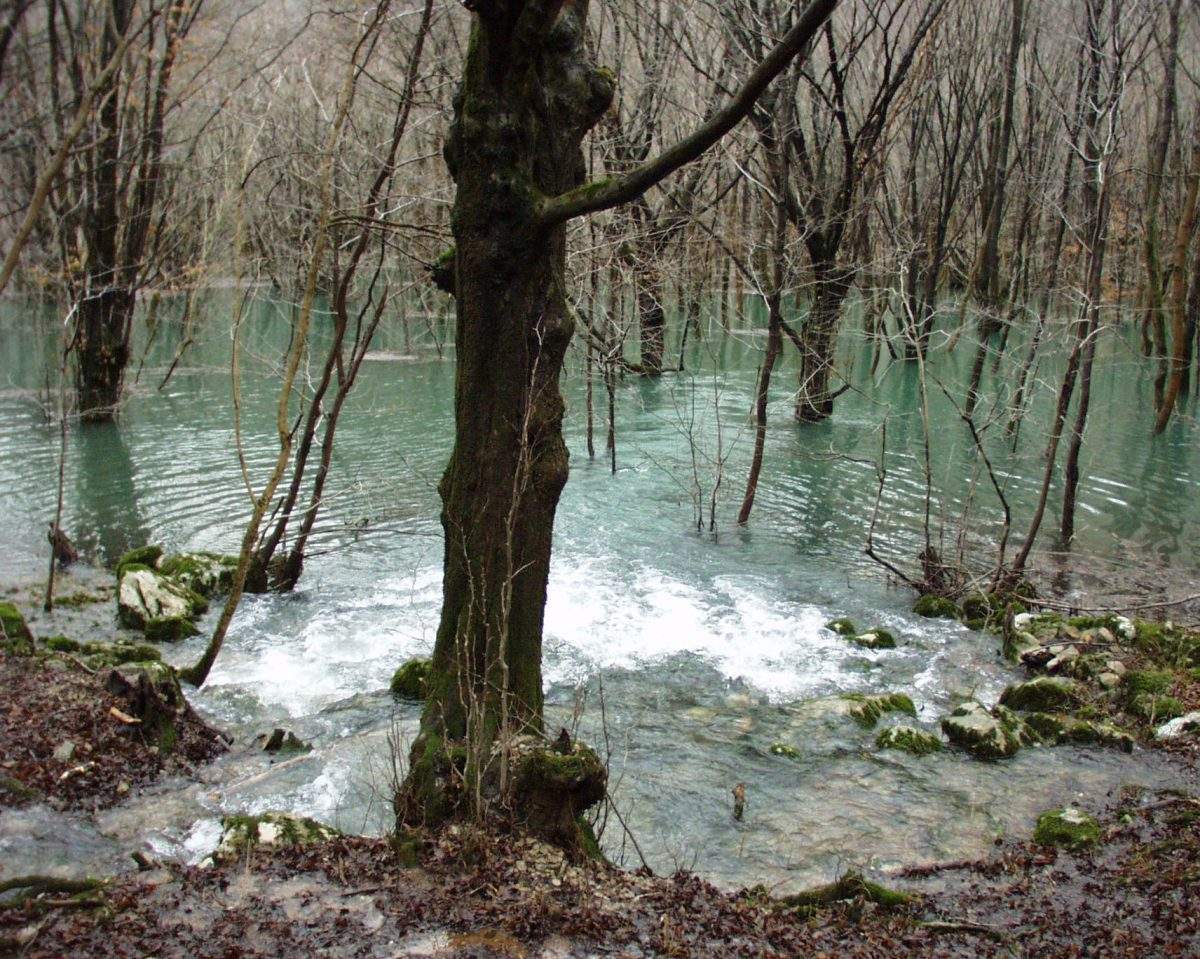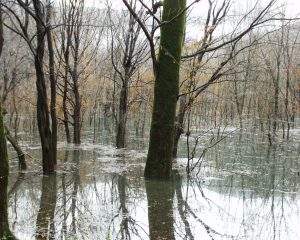The Kukuljani dolines are an extraordinary hydrological phenomenon of the Croatian Littoral. A karst lake (Photo 1) periodically emerges in the dolines as a result of heavy rainfall and/or melting snow. The water in the lake can be several tens of meters deep, submerging the trees growing on the bottom of the dolines. The lake has been known to reach as far as the town of Ponikve, located on the south slopes of the dolines.
The bottom of the dolines is divided into two parts – Veli Lug and Mali Lug. Excess water first begins to emerge from several periodical springs in Mali Lug (Photo 2); eventually Mali Lug is flooded and the water overflows into Veli Lug. When the water retreats, it seeps into sieve-like ponors located in Mali Lug.
The Kukuljani dolines are also a very interesting botanical phenomenon. Veli Lug and Mali Lug are rare examples of regions in the Littoral with a thriving floodplain forest of narrowleaf ash (Fraxinus angustifolia subsp. oxycarpa) and a wet forest of the continental European hornbeam (Carpinus betulus). Many spring flowers blossom in the springtime in the part of the European hornbeam forest that is usually not inundated, making this a unique area in the Littoral where we can find, in one spot, almost all the most important spring flowers that grow in mesophilic, European-hornbeam forests.
M. R.





